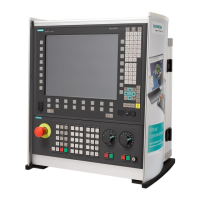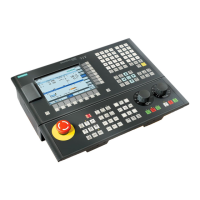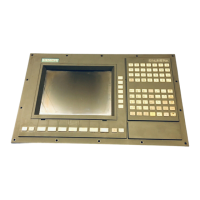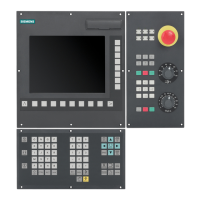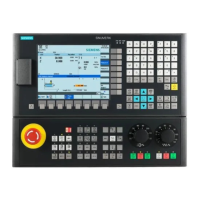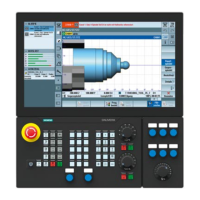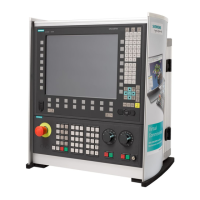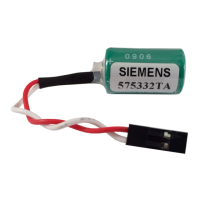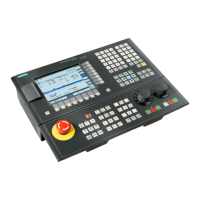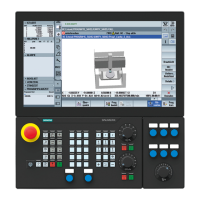A
Appendix 03.04
B Terms
Ó Siemens AG, 2004. All rights reserved
A-490 SINUMERIK 840D/840Di/810D Operator’s Guide HMI Advanced (BAD) – 03.04 Edition
R
R parameter
Calculation parameter. The programmer can assign or request the
values of the R parameter in the -> parts program as required (R
variable).
Rail
This rail is used to mount the modules of the S7-300 system.
Rapid traverse
The highest traversing speed of an axis used, for example, to bring
the tool from an idle position to the -> workpiece contour or retract it
from the workpiece contour.
Reference point
Point on the machine tool with which the measuring system of the
-> machine axes is referenced.
Reference point
approach
If the position measuring system used is not an absolute-value
encoder, then a reference point approach operation is required to
ensure that the actual values supplied by the measuring system are in
accordance with the machine coordinate values.
Remanence
Data areas in data blocks, such as timers, counters and flags are
remanent if their contents are not lost in the case of a restart or Power
Off.
REPOS
1. Reapproach contour, triggered by operator
REPOS allows the tool to be returned to the interrupt position by
means of the direction keys.
2. Programmed contour reapproach
A selection of approach strategies are available in the form of
program commands: Approach point of interruption, approach start
of block, approach end of block, approach a point on the path
between start of block and interruption.
Rigid tapping
This function is used to tap holes without the use of a compensating
chuck. The spindle is controlled as an interpolative rotary axis and drill
axis, with the result that threads are tapped precisely to the final
drilling depth, for example, in blind tapped holes (precondition:
Spindle axis mode).
Rotary axis
Rotary axes cause the tool or workpiece to rotate to a specified angle
position.
Rotary axis,
continuously turning
The range of motion of a rotary axis can be set to smaller than 360
degrees or defined as continuous in both directions, depending on the
application. Continuously turning rotary axes are used, for example,
for eccentric machining, grinding and winding.
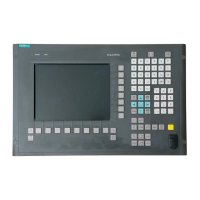
